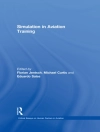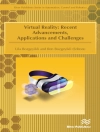- Reviews advances in understanding how breeding and growth affects the development of quality attributes such as fat content and tenderness;
- Summarises recent research on how management of cattle and carcass handling affects sensory properties;
- Discusses current research on measuring and optimising quality traits such as colour, flavour and tenderness
Cuprins
Part 1 Breeding and growth
1.Biological types of cattle: carcass and meat quality: M. A. Price, University of Alberta, Canada;
2.Traditional animal breeding of cattle to improve carcass composition and meat quality: Matt Spangler, University of Nebraska, USA;
3.Muscle fibre types and beef quality: Thierry Astruc and Annie Vénien, INRA, France;
4.Factors affecting fat content and distribution of fat in cattle and carcasses: Stephen B. Smith, Texas A&M University, USA;
Part 2 Management of cattle
5.Beef cattle nutrition and its effects on beef quality: Christopher J. Richards, Oklahoma State University, USA and and Michael E. Dikeman, Kansas State University, USA;
6.Effects of metabolic modifiers on beef carcass composition and meat quality: John M. Gonzalez, Sara M. Ebarb, Kelsey J. Phelps and Michael E. Dikeman, Kansas State University, USA;
7.Understanding the effects of handling, transportation, lairage and slaughter on cattle welfare and beef quality: Michael S. Cockram, University of Prince Edward Island, Canada;
8.The effects of carcass chilling and electrical stimulation on visual beef quality and palatability: Phillip E. Strydom, Agricultural Research Council and University of Stellenbosch, South Africa;
Part 3 Quality traits
9.Beef colour development and variation: Ranjith Ramanathan, Oklahoma State University, USA and Richard A. Mancini, University of Connecticut, USA;
10.Beef carcass grading and classification: Michael E. Dikeman, Kansas State University, USA;
11.Branded beef programmes: B. N. Harsh and D. D. Boler, University of Illinois, USA;
12.Ageing, physical and chemical methods for improving tenderness and palatability of beef: D. L. Hopkins, NSW Department of Primary Industries, Centre for Red Meat and Sheep Development, Australia;
13.Factors affecting flavour development in beef: Chris R. Kerth, Texas A&M University, USA;
14.Packaging systems for beef retailers and their effects on visual quality and palatability: J. W. S. Yancey, University of Arkansas, USA;
15.Measuring and assessing beef quality and sensory traits for retailers and consumers: Derek A. Griffing and Christy L. Bratcher, Auburn University, USA;
16.The role of beef in human nutrition and health: Chunbao Li, Nanjing Agricultural University, China;
Part 4 Emerging trends
17.The future of DNA technologies for improving beef quality: marbling, fatty acid composition and tenderness: Elly Ana Navajas, Instituto Nacional de Investigación Agropecuaria, Uruguay;
18.The sustainability and ‘carbon footprints’ of conventional and alternative beef production systems: Jude L. Capper, Livestock Sustainability Consultancy, UK;
19.Controversies surrounding the impact of the fat content of beef on human health: Jennifer Fleming and Penny Kris-Etherton, Penn State University, USA;
Despre autor
Dr Michael Dikeman is Emeritus Professor of Meat Science at Kansas State University, USA. He is a past President of the American Meat Science Association and of the Federation of American Societies of Food Animal Sciences (FASFAS – now FASS). His many honours include the American Society of Animal Science Fellow Award and induction into the Meat Industry Hall of Fame for his outstanding contribution to meat science. He is joint Editor-in-Chief of the three-volume Encyclopaedia of Meat Science.












